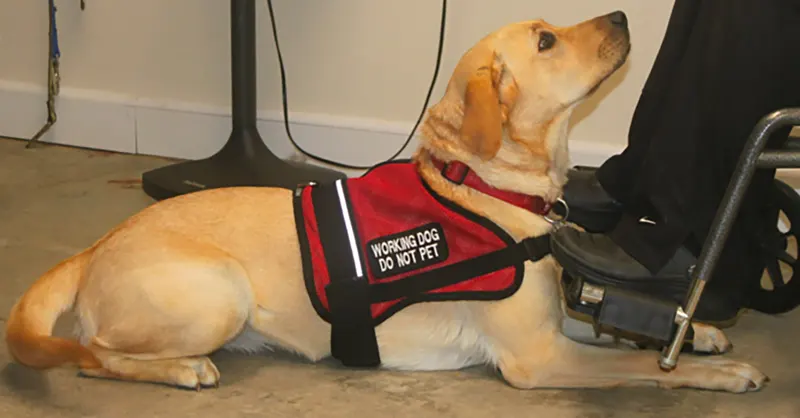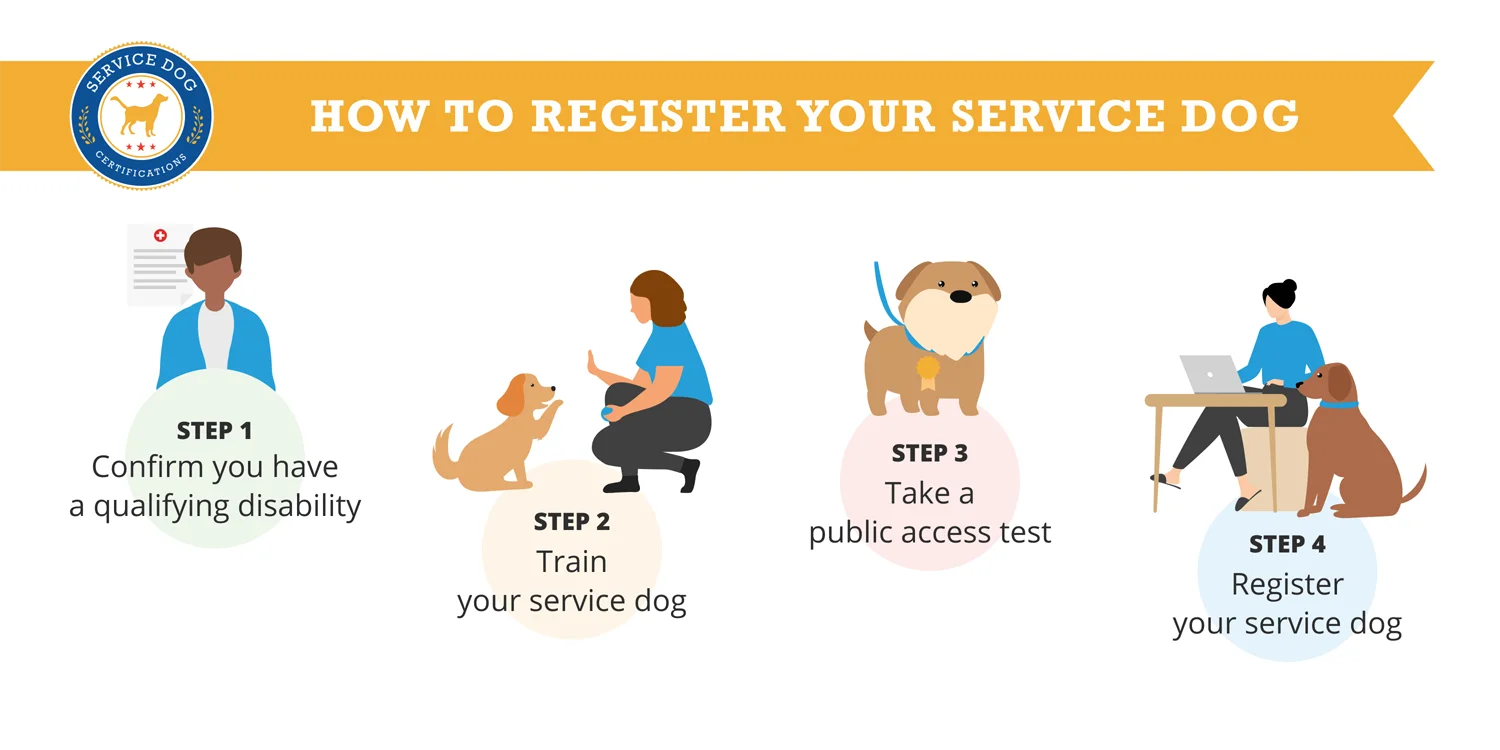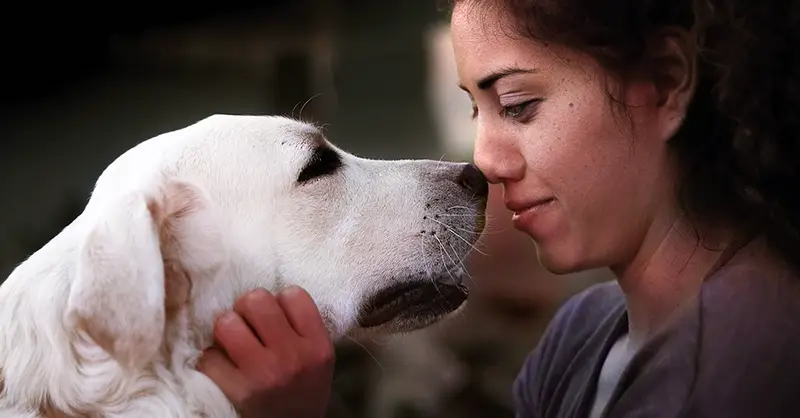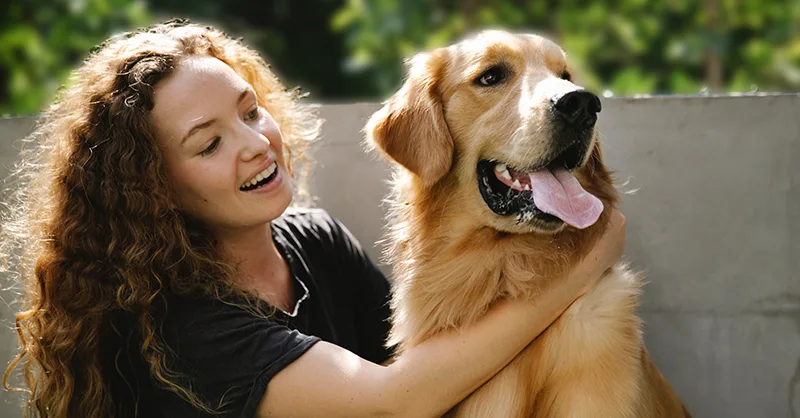Home Page › Blog › Service Dog Requirements
Service Dog Requirements

The ADA defines a Service Animal as a dog individually trained to perform tasks or do work for the benefit of a person with a disability. A disability can be a physical impairment, but the ADA also includes mental illnesses that substantially limit one or more major life activities, such as depression, severe anxiety, or PTSD.
This article will cover the qualification requirements to be a Service Dog handler, what training and tests can be expected for your Service Dog, and what to expect when in public. After covering the legal rights of Service Dogs, we’ll present options for facilitating interactions with the public, including specialized Service Dog accessories and identification.
What are the Service Dog requirements?
Training a dog to become a service animal is available to individuals who have a disability. If you are interested in having a service dog, below are requirements to be aware of:
Eligibility: A person is eligible for a service dog if they have a physical, emotional, or mental health disability
Training: The dog must be trained to take a specific action when needed to assist the person with a disability. The task(s) performed by the dog must be directly related to the person’s disability. The ADA does not require professional training; people with disabilities have a right to train the dog themselves.
Behavior: A service dog must be under its handler’s control at all times.
Verification: If it is not obvious what service the dog provides, the handler must be willing to answer two questions about their service dog. These two questions are: (1) is the dog a service animal required because of a disability? and (2) what work or task has the dog been trained to perform? Staff are not allowed to request any documentation for the dog, require that the dog demonstrate its task, or inquire about the nature of the person’s disability.
Identification: Optionally, it can help service dogs to be clearly identified with accessories like ID cards, vests, tags, and certificates.
How does my dog become a Service Dog?
Consider these four simple steps to help you understand how your dog can become a service dog.
- Determine if you have an eligible disability
- Train your Service Dog
- Pass a Public Access Test
- Consider Service Dog Certification and Registration
Service Dogs serve an important function for those in our community who need special care. It’s crucial for both Service Dog handlers and the general public to be aware of what Service Dog requirements are.
Step 1: Determine if you have an eligible disability
Under the ADA, you must have a qualifying condition to have a Service Dog. The condition can take many forms (physical, mental, etc.). Physical disabilities include conditions like visual impairment, limited mobility, and hearing loss. The physical or mental impairment must substantially limit a major life activity like the ability to work, move about, socialize, or sleep.
Some common conditions that qualify for Psychiatric Service Dogs are anxiety, depression, and PTSD, but this list is not exhaustive. For psychiatric disabilities, a common first step is to be evaluated by a Licensed Mental Healthcare Practitioner (LMHP) who can write a letter confirming your eligibility. These PSD letters typically have the following traits:
- written on the licensed healthcare professional’s letterhead
- dated and signed by the professional
- contain the professional’s contact information, license number, license date, and state of licensure
- contain the professional’s opinion on whether you have a mental or emotional disability that can qualify for a psychiatric service dog
Step 2: Training your Service Dog
To be considered a Service Dog, a dog must be individually trained to perform a job or task relating to your disability. Be aware that there is no official organization that sets training standards in the U.S. You are not required to work with a trainer – the ADA allows handlers to train their dogs on their own.
While there’s no minimum requirement in the US, some private standards suggest approximately 120 hours over six months. Some sources recommend that at least 30 hours (about ¼ of the time) be spent in public to help train the dog for moments of distraction and when surprises come their way. While not required, it can be helpful for Service Dogs to wear relevant accessories so that people in public can adjust their behavior accordingly.
The most important thing for you to teach your Service Dog is tasking or learning the specific skill they will be performing to help assist with your disability. There are countless tasks Service Dogs are called on to perform, including guiding the visually impaired, pulling a wheelchair, sensing a medical alert, tactile stimulation during a panic attack, reminding the handler to take their medication, scouting a room for someone with PTSD, or grounding/blocking in public areas.
Step 3: Pass a public access test
In addition to training your dog to perform tasks that assist with your disability, it is important for a service dog to be able to comport itself appropriately in public by passing a public access test.
Public Access Criteria:
- No aggressive behavior towards people and other animals.
- Refrain from sniffing behaviors unless released to do so.
- No solicitations for food or affection while on duty.
- No over-excitement and hyperactivity in public.
- Able to tolerate novel sights and sounds in various public settings.
- No unruly behavior or excessive barking.
- No relieving themselves in public without being given a specific command.
Once your dog is properly trained, your next step is to decide how you prefer to identify your service dog.
Step 4: Service Dog Certification and Registration
In the United States, service dog certifications and service dog identifications are not legally required. Staff at a public establishment cannot solicit documentation, such as proof that the animal has been certified, trained, or licensed as a Service Dog, as a condition for entry.
Despite the limited verification requirements established by the law, staff at many public establishments will still insist on IDs or other tangible proof of Service Dog status. Service Dog handlers often find it helpful to have documents and accessories that help signal that their dog is trained and at work in order to prevent being met with hostility and confusion.
Electing to carry a custom Service Dog ID card and Service Dog Vest may be helpful tools for you and your service dog to navigate public spaces. You may also choose not to carry the ID card and stand your ground on principle when you encounter people ignorant of service dog rights. Under ADA rules, staff at a venue may only ask two questions if the handler’s disability is not apparent: (1) is the dog a service animal required because of a disability? and (2) what work or task has the dog been trained to perform?

After you verbally confirm that your dog is a trained service dog, reasonable accommodations must legally be made for service dogs. Service Dogs can go anywhere their handlers can go, provided they do not pose a health or safety hazard to others. If a particular service animal behaves in a way that poses a direct threat to the health or safety of others, has a history of such behavior, or is not under the control of the handler, that animal may be excluded. If an animal is excluded for such reasons, staff must still offer their goods or services to the person without the animal present. It’s important to understand these rules so you know what rights you have as the owner of a Service Dog and when third parties are violating your rights.
You’re all caught up on what it takes to have a Service Dog!
Ready to register and ID your dog?
Unable to train your dog as a service dog?
You may be interested in an Emotional Support Animal instead. ESAs do not require specific training, have access to no-pet apartments, and are exempt from breed or weight restrictions. Click here to learn more about ESAs.
In short, ESAs are protected under Federal Housing Regulations (but not the ADA), meaning that you cannot be charged any pet rent, deposits, or fees, nor can you or your ESA be denied housing on the grounds of living with a pet, with very few exceptions.
To qualify for an ESA, you must have a licensed mental health practitioner (including, but not limited to, psychologists, therapists, social workers, GPs/PCPs, etc.) write a letter affirming that you have a qualifying condition (including, but not limited to, depression, anxiety, PTSD, etc.) that is helped by an emotional support animal. Additionally, unlike Service Animals, ESAs do not necessarily have to be dogs; cats, rabbits, and birds are other common choices.
¿Quieres leer este artículo en español?
Puede encontrar una versión traducida al español de los requisitos para perros de servicio aquí.
Want to read this article in Spanish?
You can find a Spanish translated version of Service Dog Requirements here.
About the Author: The writing team at Service Dog Certifications is made up of folks who really know their stuff when it comes to disability laws and assistance animals. Many of our writers and editors have service dogs themselves and share insights from their own experiences. All of us have a passion for disability rights and animals.
439 comments
Leave a Reply Cancel reply
Latest Posts

How to Bring a Service Dog to Disneyland
Trained service dogs are more than welcome to join their handlers at Disneyland. In this guide, we’ll explain Disneyland’s policies and give practical advice for bringing a service dog to Disneyland for the first time. Disneyland’s Service Dog Policies The Magic Kingdom is happy to welcome trained service dogs across most park locations! They kindly […]

Read More

Can Dogs Eat Tomatoes?
Yes! Dogs can safely enjoy tomatoes, but there are a few risks to be aware of so you can feed your dog responsibly. Fully ripe tomatoes (without the stems and leaves) can actually have nutrients that are good for your pup. Tomatoes have chlorogenic acid, an antioxidant that can have anti-inflammatory effects in cells. They’re […]

Read More

Can a Primary Care Doctor Write an ESA Letter?
Your family doctor, also called a primary care physician (PCP), can write a letter recommending an emotional support animal. We’ll explain what legally gives them that ability and explore what better options might be available for you. Why are Physicians Able to Write an ESA Letter? To turn your pet into an emotional support animal, […]

Read More







Hi, I have disabling anxiety and other physical health impairments that ruin my life and I know that a service dog would help me be more independent. I have the training background to owner train, I know how to get a puppy, but legally do I need a doctors note? Do I need a doctors approval or can I just get a puppy and start?
You do not need a doctor’s note for a service dog.
Can my dog be trained to be my service dog
That really depends on your needs and if your dog has the skill level and physical attributes to be your service dog. If you’re unsure about what tasks your dog might do for you as a service dog, talk to your doctor.
I will be adopting a standard poodle puppy which i would like to train as a service dog. I dont have money to pay for a trainer. I have stage 4 breast cancer and diabetes.
I am always stressed and have severe trouble sleeping. I need to be able to hug and have the poodle comfort and console me by being at my side all the time. I would also like her to be trained to bring my meter and needle if necessary and also something sweet if needed. I am alone at home most of the time and see my husband 2 hours a day because he works. I will be getting the puppy on Aug 7 and would like to have everything in place when rrequired. I would also like to know the steps to go through to complete this.
thank you so much for your time.
Gisela Cudney
Start by identifying what tasks your service dog could fulfill for you and gather information on how to best train a dog to perform those tasks. Once you bring your puppy home start the training right away. Obviously, it may take some time for your puppy to pick up on the tasks, especially if the poodle is still in a very playful phase. But with patience and perseverance and lots of love, the dog should eventually get it. You may find this article on how to get a service dog interesting https://www.servicedogcertifications.org/how-to-get-a-service-dog/ Wish you lots of happy moments with your new puppy!
My father has a 2yr old Labrador tht needs to be trained for various disabilities. He is a Veteran and is unable to train the animal himself but can not afford a trainer. Where can I find help with getting his animal properly trained.
Hi! There are some great programs out there to help vets get service dogs trained. The VA should have some resources, but here’s a link to a pretty good program as well
https://sierradelta.com/?utm_source=communitypage&utm_medium=bluebuffalowebsite
I am hearing impaired would need something that come to me when door bell ring phone as well also fire alarm would I be consider disability?
Hearing impairments can indeed be a disability that qualifies for a service dog. The Americans with Disabilities Act defines any disability limiting one or more life activities as a qualifying disability. You may find this article on disabilities that qualify for a service dog interesting – https://www.servicedogcertifications.org/disabilities-qualify-service-dog/